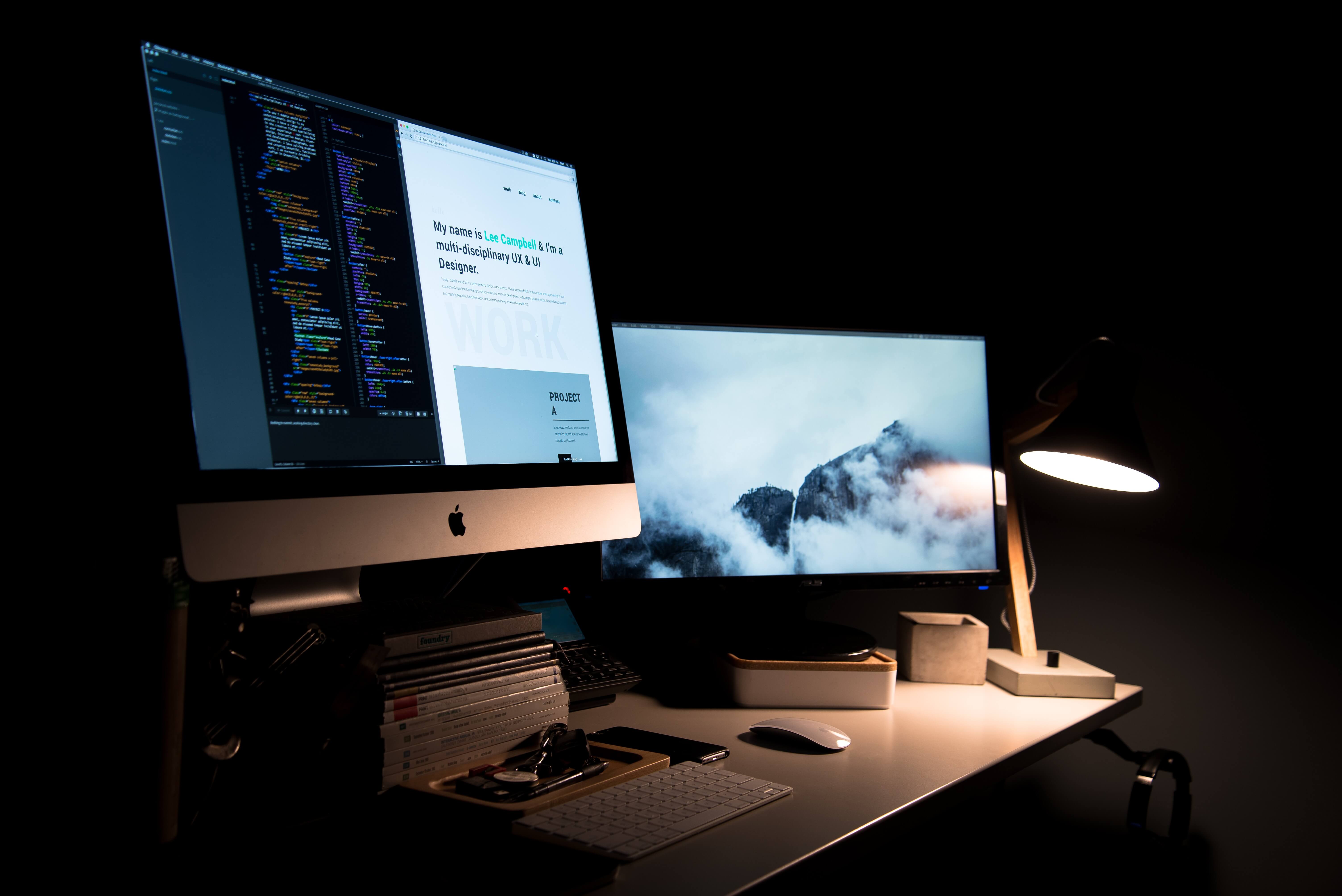All Categories
Featured
Table of Contents
- – Responsive Design Best Practices - Google Sear...
- – Web Design And Applications - W3c Tips and Tr...
- – Boxcar Studio - Wordpress & Drupal Web Design...
- – Why Is Web Design Important? - 6 Reasons To I...
- – Responsive Design Best Practices - Google Sea...
- – Lifted Logic: Web Design In Kansas City - Seo...
- – Top 30 Web Design Companies - Apr 2022 - Des...
- – What Is Web Design? The Ultimate Guide To We...
- – Basics Of Web Development & Coding Specializ...
- – Top 30 Web Design Companies - Apr 2022 - Des...
- – Beginner's Guide: How To Learn Web Design At...
Responsive Design Best Practices - Google Search Central Tips and Tricks:
Quick summary Use and the energy, not the visual style, determine the success or failure of a site. Since the visitor of the page is the only individual who clicks the mouse and for that reason chooses everything, user-centric design has actually developed as a basic technique for successful and profit-oriented web style - web design frederick md.
and the energy, not the visual style, identify the success or failure of a website. Since the visitor of the page is the only individual who clicks the mouse and therefore decides whatever, user-centric style has actually become a standard technique for successful and profit-oriented web style. After all, if users can't utilize a function, it may too not exist.
g. where the search box ought to be placed) as it has already been done in a variety of articles; rather we focus on the techniques which, utilized appropriately, can result in more advanced style choices and streamline the procedure of viewing presented info. Please observe that you may be interested in the usability-related articles we have actually published prior to: Principles Of Excellent Website Style And Reliable Web Style Standards, In order to use the concepts effectively we initially require to comprehend how users communicate with sites, how they believe and what are the fundamental patterns of users' habits.
Web Design And Applications - W3c Tips and Tricks:
Visitors glance at each new page, scan a few of the text, and click on the first link that captures their interest or vaguely looks like the thing they're trying to find. In reality, there are large parts of the page they do not even look at. Most users search for something fascinating (or useful) and clickable; as quickly as some promising candidates are discovered, users click.
If a page provides users with high-quality content, they are ready to jeopardize the material with ads and the style of the site. This is the reason not-that-well-designed sites with top quality content gain a lot of traffic over years. Content is more essential than the style which supports it.
Users don't check out, they scan. Notice how "hot" locations abrupt in the middle of sentences. This is common for the scanning process. Very easy principle: If a site isn't able to meet users' expectations, then designer failed to get his task done correctly and the business loses cash. The higher is the cognitive load and the less instinctive is the navigation, the more prepared are users to leave the website and look for alternatives.
Boxcar Studio - Wordpress & Drupal Web Design ... - Ann Arbor Tips and Tricks:
Neither do they scan webpage in a direct fashion, going sequentially from one site section to another one. Rather users satisfice; they pick the first sensible option. As quickly as they discover a link that appears like it might cause the objective, there is an extremely excellent opportunity that it will be immediately clicked.
It doesn't matter to us if we understand how things work, as long as we can use them. If your audience is going to imitate you're designing billboard, then style terrific signboards." Users wish to have the ability to control their browser and depend on the consistent data presentation throughout the website.
If the navigation and website architecture aren't user-friendly, the variety of concern marks grows and makes it harder for users to comprehend how the system works and how to obtain from point A to point B. A clear structure, moderate visual ideas and easily identifiable links can assist users to find their course to their aim.
Why Is Web Design Important? - 6 Reasons To Invest In Site ... Tips and Tricks:

claims to be "beyond channels, beyond products, beyond circulation". What does it indicate? Because users tend to check out websites according to the "F"-pattern, these 3 declarations would be the first elements users will see on the page once it is packed. The design itself is simple and instinctive, to understand what the page is about the user needs to browse for the response.
When you have actually accomplished this, you can communicate why the system is helpful and how users can benefit from it. Do Not Waste Users' Persistence, In every job when you are going to offer your visitors some service or tool, try to keep your user requirements minimal.
First-time visitors are prepared to, not filling long web types for an account they might never use in the future. Let users explore the site and discover your services without requiring them into sharing personal information. It's not affordable to require users to enter an email address to check the function.
Responsive Design Best Practices - Google Search Central Tips and Tricks:
And that's what you desire your users to feel on your web site. The registration can be done in less than 30 seconds as the form has horizontal orientation, the user does not even require to scroll the page.
A user registration alone is adequate of an impediment to user navigation to cut down on incoming traffic. Manage To Focus Users' Attention, As sites supply both fixed and vibrant content, some elements of the user interface draw in attention more than others do.
Focusing users' attention to specific locations of the site with a moderate use of visual aspects can help your visitors to get from point A to point B without thinking about how it really is supposed to be done. The less enigma visitors have, the they have and the more trust they can establish towards the business the website represents.
Lifted Logic: Web Design In Kansas City - Seo - Website ... Tips and Tricks:
4. Pursue Function Direct exposure, Modern website design are typically criticized due to their approach of guiding users with visually appealing 1-2-3-done-steps, large buttons with visual results and so on. But from the design viewpoint these elements really aren't a bad thing. On the contrary, such as they lead the visitors through the website content in an extremely basic and user-friendly method.
The site has 9 main navigation choices which are visible at the very first glance. The choice of colors may be too light, though. is a basic principle of successful user interface style. It does not really matter how this is accomplished. What matters is that the material is well-understood and visitors feel comfy with the method they interact with the system.
com gets directly to the point. No cute words, no exaggerated declarations. Instead a cost: just what visitors are looking for. An ideal solution for effective writing is touse brief and succinct expressions (come to the point as rapidly as possible), use scannable design (classify the material, utilize numerous heading levels, use visual aspects and bulleted lists which break the flow of uniform text blocks), usage plain and unbiased language (a promo does not need to sound like ad; give your users some reasonable and unbiased reason that they must utilize your service or stay on your site)6.
Top 30 Web Design Companies - Apr 2022 - Designrush Tips and Tricks:
Users are hardly ever on a website to enjoy the design; furthermore, in many cases they are looking for the details despite the style - web design frederick md. Pursue simplicity instead of complexity. From the visitors' perspective, the finest site design is a pure text, with no ads or additional material obstructs matching exactly the query visitors used or the content they have actually been trying to find.
Finch clearly provides the information about the site and gives visitors an option of options without overcrowding them with unneeded content. 7. Don't Be Scared Of The White Area, In fact it's truly hard to overstate the importance of white space. Not only does it help to for the visitors, however it makes it possible to perceive the information provided on the screen.
Complex structures are harder to read, scan, examine and work with. If you have the choice in between separating two style segments by a visible line or by some whitespace, it's normally much better to use the whitespace option. (Simon's Law): the better you handle to provide users with a sense of visual hierarchy, the simpler your content will be to view.
What Is Web Design? The Ultimate Guide To Website Design ... Tips and Tricks:
The same conventions and guidelines need to be used to all elements.: do the most with the least amount of cues and visual aspects. 4 significant points to be thought about: simpleness, clearness, distinctiveness, and emphasis. Simpleness consists of just the components that are essential for interaction. Clearness: all elements must be created so their significance is not ambiguous.
Conventions Are Our Friends, Conventional design of website elements doesn't result in a boring web website. In truth, as they lower the learning curve, the requirement to determine how things work. For example, it would be a functionality headache if all sites had various visual discussion of RSS-feeds. That's not that various from our regular life where we tend to get utilized to fundamental principles of how we arrange information (folders) or do shopping (positioning of items).
understand what they're anticipating from a website navigation, text structure, search placement etc. A typical example from use sessions is to translate the page in Japanese (presuming your web users don't understand Japanese, e. g. with Babelfish) and provide your usability testers with a job to discover something in the page of various language.
Basics Of Web Development & Coding Specialization - Coursera Tips and Tricks:
Test Early, Test Typically, This so-called TETO-principle needs to be used to every web design task as usability tests typically provide into considerable problems and problems related to an offered layout. Test not too late, not too little and not for the wrong reasons.
Some essential points to bear in mind: according to Steve Krug, and testing one user early in the task is much better than testing 50 near the end. Accoring to Boehm's first law, errors are most frequent throughout requirements and style activities and are the more costly the later on they are eliminated.
That indicates that you develop something, test it, fix it and then evaluate it again. There might be issues which haven't been found throughout the very first round as users were almost blocked by other issues.
Top 30 Web Design Companies - Apr 2022 - Designrush Tips and Tricks:

This holds for designers also. After you've worked on a site for couple of weeks, you can't observe it from a fresh viewpoint anymore. You understand how it is constructed and for that reason you know precisely how it works you have the knowledge independent testers and visitors of your website wouldn't have.
It can be linked to other locations such as graphic style, user experience, and multimedia arts, but is more aptly seen from a technological perspective. It has actually become a large part of individuals's daily lives. It is difficult to think of the Web without animated graphics, different designs of typography, background, videos and music.

Throughout 1991 to 1993 the Web was born. Text-only pages might be seen utilizing an easy line-mode web browser. In 1993 Marc Andreessen and Eric Bina, produced the Mosaic web browser. At the time there were several web browsers, nevertheless most of them were Unix-based and naturally text heavy. There had actually been no integrated method to graphic style components such as images or sounds.
Beginner's Guide: How To Learn Web Design At Home - Medium Tips and Tricks:
The W3C was produced in October 1994 to "lead the Internet to its full capacity by developing common procedures that promote its evolution and ensure its interoperability." This prevented any one business from monopolizing a propriety web browser and shows language, which might have modified the result of the Web as a whole.
As this has occurred the innovation of the web has likewise carried on. There have actually likewise been significant modifications in the way people use and access the web, and this has altered how sites are designed. Given that completion of the browsers wars [] brand-new web browsers have actually been launched. Numerous of these are open source meaning that they tend to have much faster advancement and are more helpful of brand-new requirements.
Learn more about Lovell Media Group LLC or TrainACETable of Contents
- – Responsive Design Best Practices - Google Sear...
- – Web Design And Applications - W3c Tips and Tr...
- – Boxcar Studio - Wordpress & Drupal Web Design...
- – Why Is Web Design Important? - 6 Reasons To I...
- – Responsive Design Best Practices - Google Sea...
- – Lifted Logic: Web Design In Kansas City - Seo...
- – Top 30 Web Design Companies - Apr 2022 - Des...
- – What Is Web Design? The Ultimate Guide To We...
- – Basics Of Web Development & Coding Specializ...
- – Top 30 Web Design Companies - Apr 2022 - Des...
- – Beginner's Guide: How To Learn Web Design At...
Latest Posts
Figma: The Collaborative Interface Design Tool. Tips and Tricks:
Web Design - The First 100 Years - Idle Words Tips and Tricks:
Web Design Certificate - Web Development Certificate Program Tips and Tricks:
More
Latest Posts
Figma: The Collaborative Interface Design Tool. Tips and Tricks:
Web Design - The First 100 Years - Idle Words Tips and Tricks:
Web Design Certificate - Web Development Certificate Program Tips and Tricks: